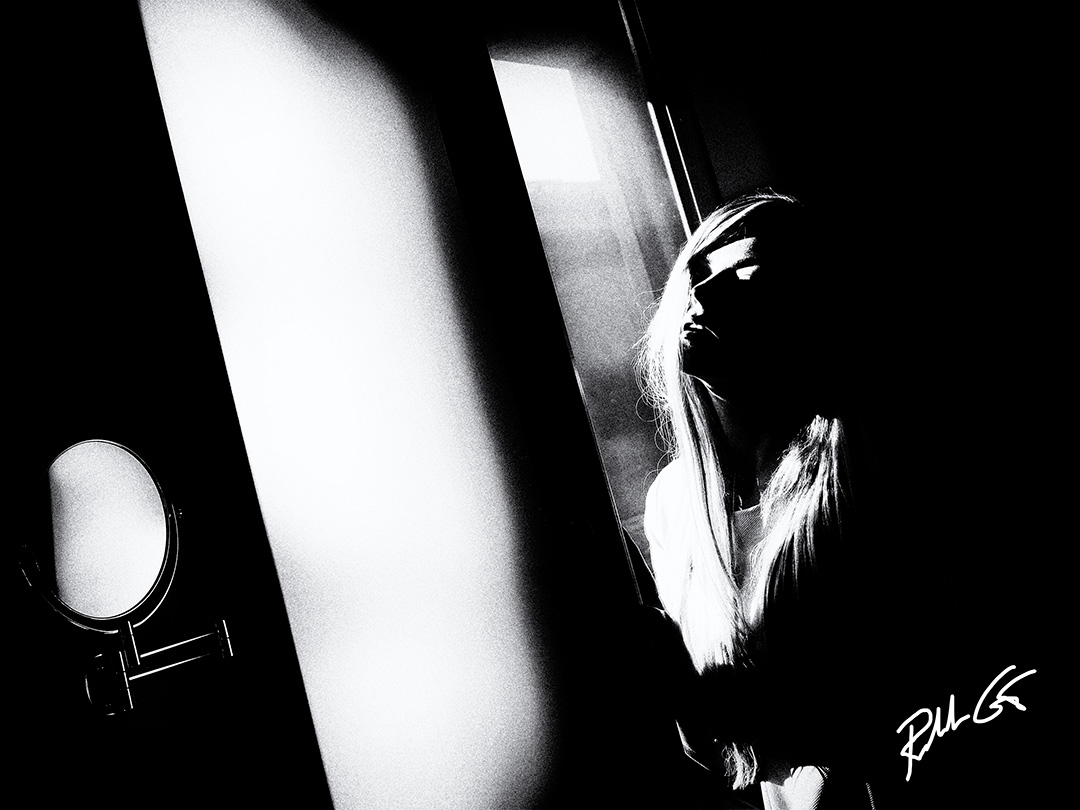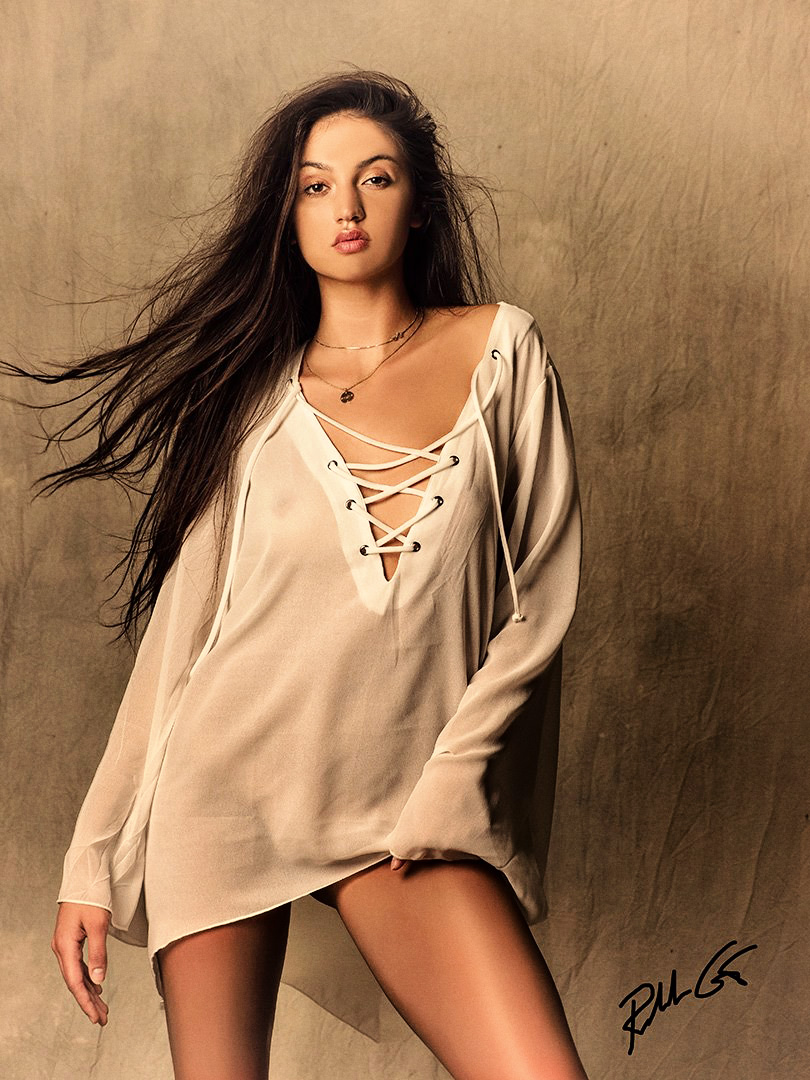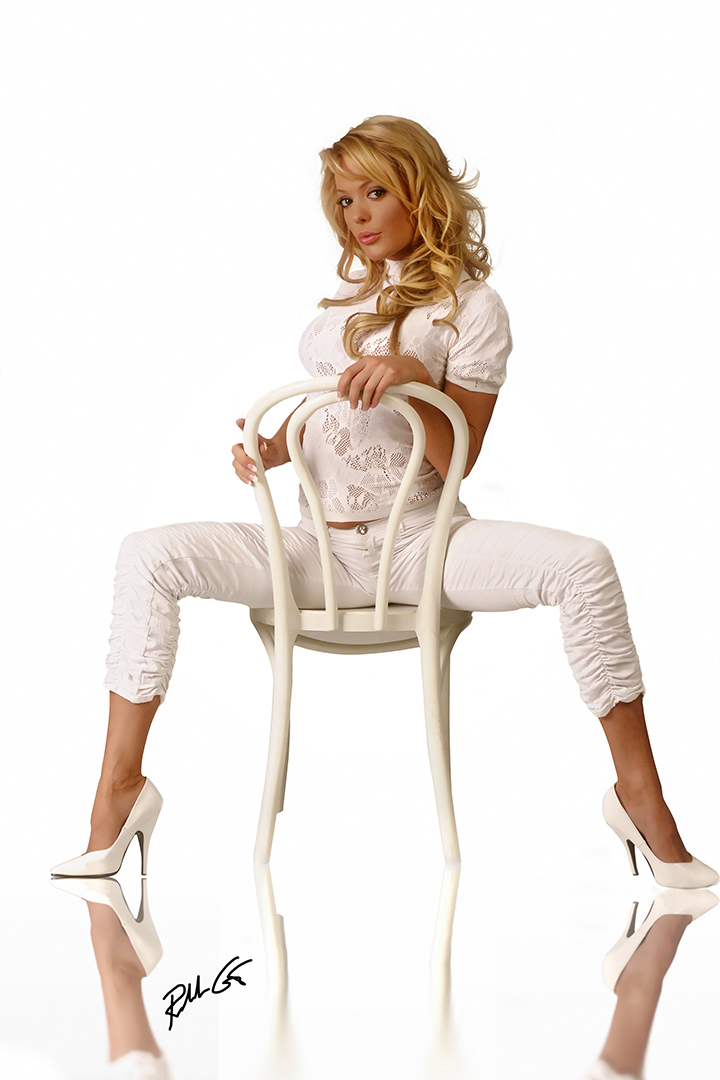Interesting Photography Lighting Keys
Ask a group of professional photographers how to achieve high-key lighting and chances are you’ll receive multiple answers to achieve the same results for a lighting technique used to eliminate shadows from primarily white backgrounds. Some photographers might discuss a hybrid lighting set-up, but most don’t know the roots of high-key lighting.

This photo uses a hybrid lighting combination of reverse, high-key and low-key lighting for dramatic impact.
The biggest assumption photographers make is that high-key lighting means a shadow-less white seamless paper or cyclorama wall, especially for studio photography. Like all misunderstood things in photography, it’s usually because a photographer hasn’t studied the history behind the concept or term, thus true high-key lighting is often misunderstood for that reason. So, to prevent a misunderstanding, let’s look at the history of high-key lighting as it originates from the early days of television and cinema film photography, not still photography.

The photographer that doesn’t understand the roots of high-key lighting would not consider this as high-key, but it is, and some also call it hybrid lighting.
Early cinema photographers in Hollywood used what was termed as three-point lighting — three lights, one on the left, one in the center and another light on the right to reduce contrast on the set that allowed the subject to move around without having to stop and make costly, time consuming adjustments — known as even or flat lighting. Traditional high-key lighting reduced the time it took to film a Hollywood production like a sitcom, where dramatic lighting is not a requirement to establish the mood in a scene. Sitcoms are traditionally the biggest users of high-key lighting, thus why this type of lighting is often associated with joy, happiness and fun.
Over time Hollywood three-point lighting would evolve into the more flexible and cooler (as in heat temperature, not Kelvin light temperature) fluorescent style of lighting. This lighting was low in contrast, due to the light qualities of fluorescent tubes, thus hard shadows are eliminated. As lighting fixtures became more portable and lighter plus cooler to operate and handle, Hollywood began to add more lighting patterns to suit the demands of more sophisticated audiences. As more dramatic cinematic productions evolved, more complicated lighting scenarios in film and television production increased, especially those with larger operating budgets.
In the early days of still photography, high-key lighting was budget driven too, especially for early fashion photography clients with limited budgets. Photographers would use Hollywood, three-point lighting, with the center or key-light fitted with a large light modifier aimed at the subject and the left and right lights aimed at the background behind the subject. In essence, the subject is able to move to the right or left without the photographer having to stop to adjust the lights and exposure, and the lack of shadows allowed for a more expedient, less costly photography production. This was often called, “the circle of arc” shooting.
Because most of this fashion photography was shot with white backgrounds, high-key lighting became traditionally associated with white backgrounds, though this is not necessarily a requirement, as high-key lighting simply means using a key-light (main light) for the subject then injecting the background with light (background light) and filling the overall scene (fill light) in order to reduce contrast between darker and lighter areas in the overall photograph.

Today, this is known more as high-key lighting and when this photo was captured, we only used one large octabox to illuminate the model, not three lights, as the white background also reflects light.
Typical of fashion photography, trends shift, and fashion photography began using a more hybrid (high- and low-key) style of lighting as designers asked photographers to match the mood their products created with the overall photograph.
Playboy was a great example, they originally evolved from low-contrast, simple two- or three-light setups in the 1970’s, but as their circulation increased, so did their budgets, as did their more dramatic lighting often used to photograph centerfolds. These more dramatic sets often involve 30 to 50 meticulously placed lights and now with their much lower budgets and circulation rates, their type of lighting is returning to the simpler light setups.
It’s this understanding of high- and low-key lighting that separates a photographer from other photographers. As I’ve stated before, lighting is the lifeblood of the image and even as popular as high-key lighting is traditionally, most photographers fail to understand it’s concept and sometimes blend a high-key lighting set-up with a low-key, high contrast lighting set-up because their goal is a shadow-less background while still keeping a more dramatically lit subject —basically hybrid lighting.
Now that we know why high-key lighting is often misunderstood by some and used in hybrid lighting scenarios, sometimes unknowingly by others, along with its history from Hollywood, hopefully your only form of high-key lighting isn’t based on lighting used for more traditional catalog photography — trying to sell a product, such as a fashion dress, with a shadow-less, white background. Experiment with high-key and hybrid lighting. Use high-key lighting to create moods besides the traditional happiness, as non-traditional or rule breaking images can produce masterpiece photographs that will separate you from traditional photographers — besides, audiences are more sophisticated today than ever before.




Nice post! I personally prefer shooting in low key lighting compared to high key. I talk about this in my latest piece, but I love to shoot using natural light sources at night for my low key photos. The only catch is finding the right extraneous lights, or making sure the night sky isn’t cluttered with clouds so the moonlight illuminates enough of my subject without drastically raising my exposure:
https://brandonlazovic.com/low-key-photography
Thanks for your feedback.